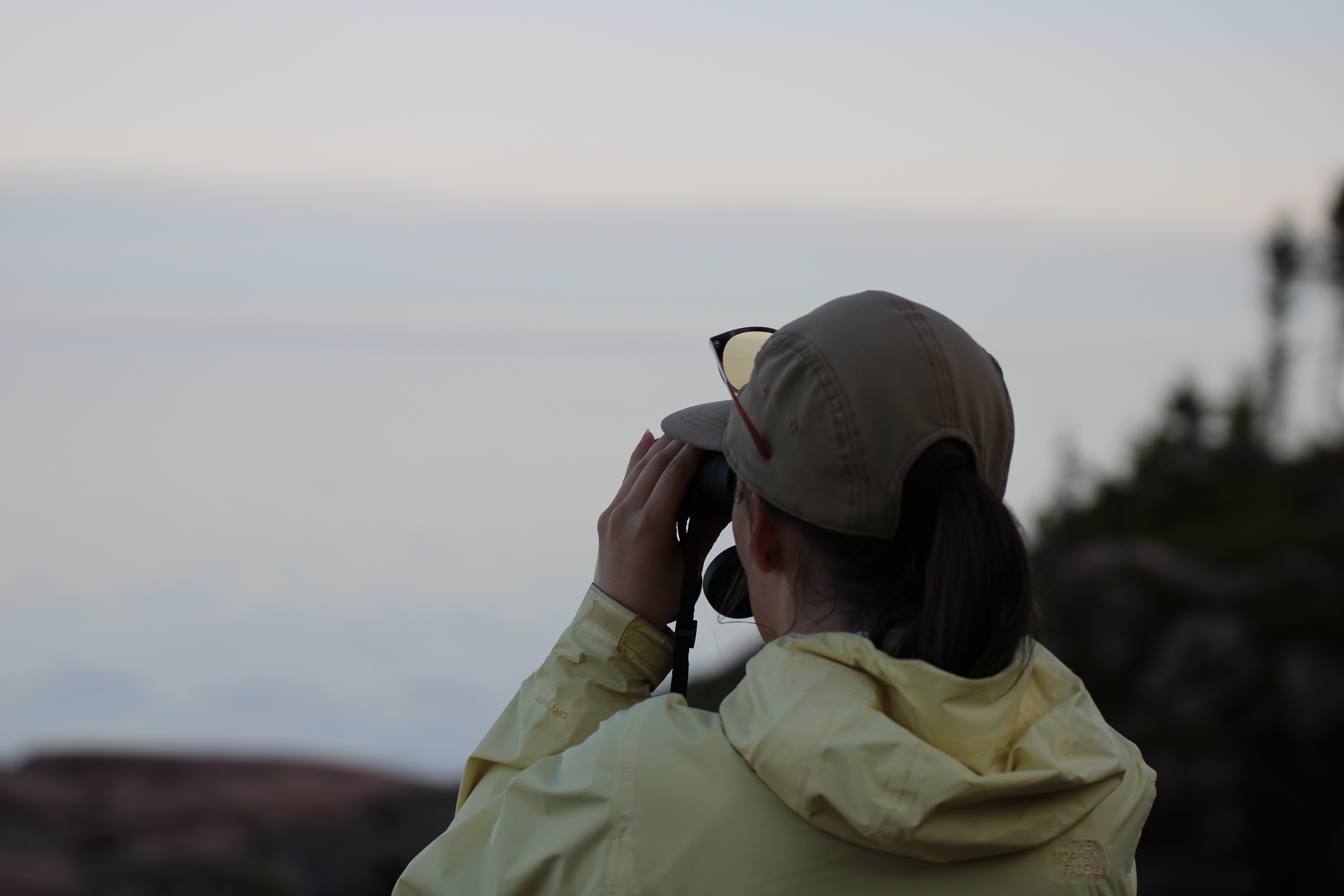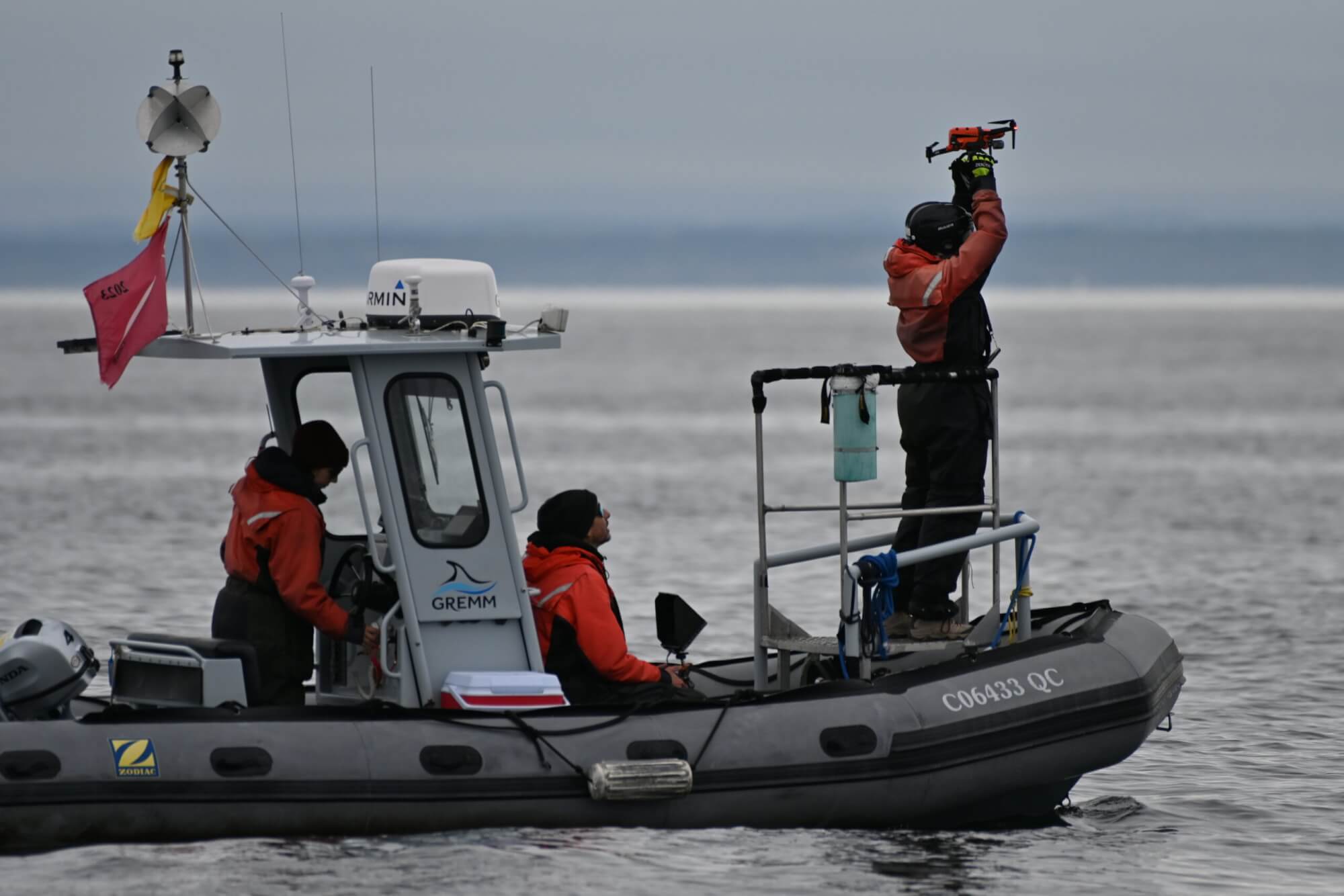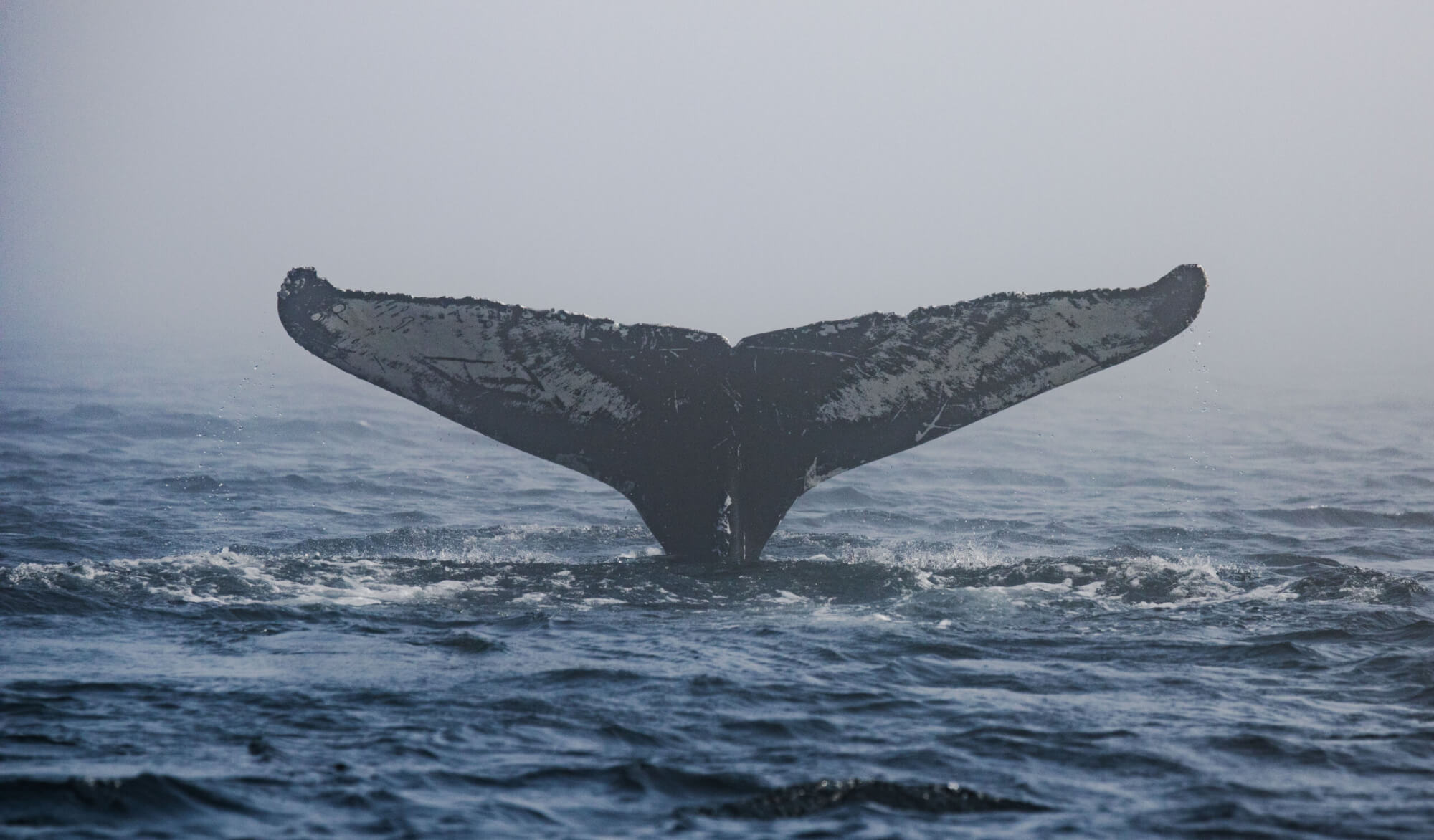When she was just 11 years old, Jade-Audrey already knew she wanted to work with cetaceans. Years later, her childhood dream finally came true. Research assistant for the Group for Research and Education on Marine Mammals (GREMM) since last year, Jade-Audrey tells us about her journey and her thoughts on women’s place in science as part of the International Day of Women and Girls in Science (February 11).
Tell us a bit about your background
I began my post-secondary studies in visual arts and then switched to psychology at university. But toward the end of my bachelor’s, I started to question my path; I was hesitant. I had devoted so much time and energy to psychology, did I really want to start all over again? Ultimately, the answer was yes. There was a forgotten little girl’s dream that I began to revisit, and that’s when I decided to enrol in a bachelor’s program in biology!
How did you discover the world of marine mammals?
The first time I saw a whale, I was 7 years old; it was a St. Lawrence beluga. I then began yelling to my mother and grandmother: “Whales, I want to see whales!” And I wanted to live in Tadoussac where I would have the chance to observe them every day. A few years later, I told my mother I wanted to help and work with cetaceans. But how? I didn’t really know yet, as I was just 10 or 11 years old and wasn’t very familiar with the concept of conservation.
Before undertaking my studies in biology, I returned to Tadoussac. It didn’t take long to convince myself that I had to get my bachelor’s degree in biology to be able to make my dream come true and turn my passion into a livelihood.
Tell us about a memory related to your job with GREMM
It was an early morning in October. No sooner did we leave the waters of Tadoussac Bay and we could already see the blows. The animals were identified as fin whales Ti-Croche, Zipper and Bp033 and they were feeding together. There were also nearly a dozen minke whales all around the research vessel and a few humpbacks a little farther out. The three fin whales had dived and we were waiting for them to return to the surface. They re-emerged so close to the boat that I was frozen stiff. I can still remember the thrill of that moment, being excited like a little girl seeing her first whale. At the same time I needed to stay focused, as my task was to photograph them! Even now, I still have trouble believing what I experienced that day. I realized how lucky I am to do the work I do, and I can finally say that I fulfilled my childhood dream!
What kinds of challenges do you face?
I would say being myself, because sometimes I put a lot of pressure on myself. It’s ridiculous, but I’ll sometimes proofread an email five times before sending it to make sure I don’t come across as unintelligent, cold, or overly forward. Research has shown that women put pressure on themselves to be perfect. We want to find our niche, but at the same time, we don’t want to be invasive. One study even showed that women apply for a job when they have around 90-100% of the required skills, while for men this figure is much lower. Sometimes I wish I had that confidence, that I could write an email and not care whether or not I added an emoji.
Living in a remote region also brings its lot of challenges, especially in winter. Here, in winter, there are no whales, so my brain is like, “But what are you doing here if there are no whales?” It’s quite challenging to be passionate about something and not be able to practise that passion year-round.
How do you see the place of women in science and how can we encourage them to get more involved in science?
Working in science requires scientific rigour and compliance with precise, detailed protocols, much like following a recipe. This means that the required professional qualities are independent of a person’s gender. Women have just as much their place as men and vice versa.
Even if the scientific world today is still predominantly male, that doesn’t mean that it’s inaccessible to women. In fact, this is less and less the case! There is still work to be done though. It’s important to say what we think, to support each other, and to lean on each other. And, every individual adds a little diversity, and one person’s strengths compensate another’s weaknesses. As a woman, we also bring diversity, because science was once a field that was typically male.
If you’re a woman and you’re curious about research, if you ask questions, if you like fiddling around with databases and doing analyses… then perhaps a career in science is for you! I realize it can be difficult to enter into a typically male-dominated environment, because sometimes we feel like we have to prove that we belong just as much as the others, but at the same time, we must not let these fears stand in our way. It’s not the fact that we are women that’s disturbing, it’s the fact that it represents a change. For the presence of women to become the new norm, more women need to choose scientific professions. This is why we need this diversity, so that this field is made up of lots of different people.







